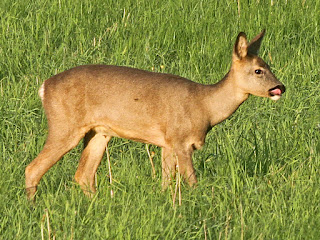Barred Sallow, North Elmham, 18th September
Clouded Silver, North Elmham, 18th September
There were a few Neuroptera too: 3 Chrysoperla carnea (plus 2 female aggs.), Conwentzia psociformis and 5 Hemerobius lutescens. Also no shortage of caddisflies with Oxyethira flavicornis, Hydropsyche pellucidula, 2 Mottled Sedges Glyphotaelius pellucidus, Limnephilus affinis, 6 Limnephilus auricula, 2 Limnephilus flavicornis, 16 Limnephilus lunatus, 2 Limnephilus marmoratus, 2 Limnephilus sparsus and Limnephilus vittatus.
A new bug for me was Orthotylus marginalis. Well, it keyed out to this, but the key recommends you check the male genitalia, and this was a female, so not sure if the ID of females is 100% safe or not.
Orthotylus marginalis, North Elmham, 18th September
Another good bug, new for the garden, was the psyllid Psyllopsis fraxinicola.
Psyllopsis fraxinicola, North Elmham, 18th September
A Birch Catkin Bug Kleidocerys resedae was new for the year.
Birch Catkin Bug Kleidocerys resedae, North Elmham, 18th September
Apparently it's normal for Hawthorn Shieldbug to get darker before hibernating, but I don't often see them like this.
Hawthorn Shieldbug, North Elmham, 18th September
Other bugs were Forest Bug, Psallus varians, 2 Empoasca vitis, 2 Kybos betulicola, 2 Kybos strigilifer, 2 other (female) Kybos sp. and a female Edwardsiana sp. Other things included 2 Ectopsocus sp. (barflies), the beetle Aphodius rufipes and a Hornet.
I don't think Kybos betulicola and Kybos strigilifer can be reliably separated other than by their male genitalia but interesting that both betulicola differed from both strigilifer in their general colouration, the strigilifer being paler and more yellowy-green.
Kybos betulicola (male, gen det), North Elmham, 18th September
Kybos strigilifer (male, gen det), North Elmham, 18th September
The following night there weren't quite so many moths but among them was a Norway-maple Pigmy Ectoedemia sericopeza, a new species for me. It's a relatively distinctive species among the Nepticulids but although the colour of the collar is a clue it's hard to tell apart from Maple-seed Pigmy Ectoedemia louisella. The collar colour suggested sericopera but this species was new to Norfolk as recently as 2013 and I'm not sure where my nearest Norway Maple is, it seemed sensible to check its genitalia (well, ok, I would have done anyway even if it was common). Fortunately there are a couple of very clear differences between the male genitalia of these two species, so the ID was confirmed. I think it was the first time an adult has been recorded in Norfolk, except where bred out from a mine (but there's been another since).
Norway-maple Pigmy Ectoedemia sericopeza (male, gen det), North Elmham, 19th September
The other moths were 2 Garden Midgets Phyllonorycter messaniella, White-shouldered House Moth Endrosis sarcitrella, Large Fruit-tree Tortrix Archips podana, Privet Tortrix Clepsis consimilana, Light Brown Apple-moth Epiphyas postvittana, Rhomboid Tortrix Acleris rhombana, 3 Garden Rose Tortrixes Acleris variegana, 7 Narrow-winged Greys Eudonia angustea, Maiden's Blush, Blood-vein, Small Blood-vein, Single-dotted Wave, Riband Wave, 2 Common Marbled Carpets, 3 Brimstone Moths, 3 Dusky Thorns, Light Emerald, Large Yellow Underwing, 4 Lesser Yellow Underwings, Setaceous Hebrew Character, Square-spot Rustic, White-point, Common Wainscot, Beaded Chestnut, 10 Lunar Underwings, Straw Dot and 2 Snouts.
A Hemerobius lutescens was the only lacewing and there were fewer caddisflies: Grammotaulius nigropunctatus, 10 Limnephilus auricula, Limnephilus flavicornis, 11 Limnephilus lunatus, Limnephilus marmoratus, Limnephilus sparsus and Halesus radiatus.
There were a few leafhoppers though, including Edwardsiana lethierryi, a new species for the garden.
Edwardsiana lethierryi (male, gen det), North Elmham, 19th September
The other leafhoppers were 2 Empoasca vitis, Kybos sp. and 4 Fagocyba cruenta. Other bugs were Birch Catkin Bug Kleidocerys resedae and Lygus pratensis. The barkfly Valenzuela flavidus was new for the year for the garden.
Valenzuela flavodus, North Elmham, 19th September
The only other things I recorded were 2 Hornets and 2 Common Frogs.
The following night was much quieter with just 17 moths: Large Fruit-tree Tortrix Archips podana, 3 Narrow-winged Greys Eudonia angustea, Dusky Thorn, Light Emerald, Large Yellow Underwing, 2 Lesser Yellow Underwings, 2 Beaded Chestnuts, 4 Lunar Underwings, Vine's Rustic and Snout.
Other things were 2 Chrysoperla carnea (green lacewings), Hemerobius lutescens (brown lacewing), Mottled Sedge Glyphotaelius pellucidus, 5 Limnephilus auricula and 3 Limnephilus lunatus (caddisflies), Birch Shieldbug, Forest Bug, Birch Catkin Bug Kleidocerys resedae, Ectopsocus petersi (barkfly) and 2 more Ectopscous sp.




















































